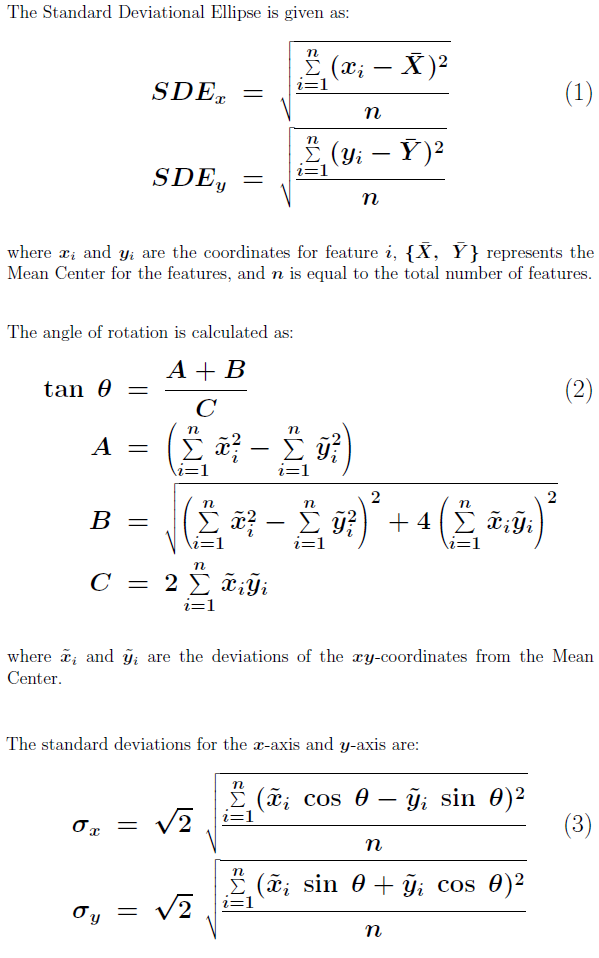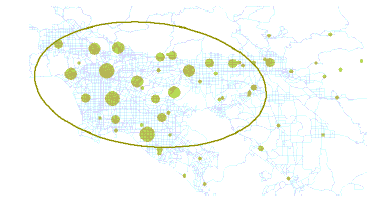A common way of measuring the trend for a set of points or areas is to calculate the standard distance separately in the x- and y-directions. These two measures define the axes of an ellipse encompassing the distribution of features. The ellipse is referred to as the standard deviational ellipse, since the method calculates the standard deviation of the x-coordinates and y-coordinates from the mean center to define the axes of the ellipse. The ellipse allows you to see if the distribution of features is elongated and hence has a particular orientation.
While you can get a sense of the orientation by drawing the features on a map, calculating the standard deviational ellipse makes the trend clear. You can calculate the standard deviational ellipse using either the locations of the features or the locations influenced by an attribute value associated with the features. The latter is termed a weighted standard deviational ellipse.
Calculations

Output and interpretation
The Directional Distribution (Standard Deviational Ellipse) tool creates a new feature class containing an elliptical polygon centered on the mean center for all features (or for all cases when a value is specified for Case Field). The attribute values for these output ellipse polygons include two standard distances (long and short axes); the orientation of the ellipse; and the case field, if specified. The orientation represents the rotation of the long axis measured clockwise from noon. You can also specify the number of standard deviations to represent (1, 2, or 3). When the features have a spatially normal distribution (meaning they are densest in the center and become increasingly less dense toward the periphery), one standard deviation (the default value) will encompass approximately 68 percent of all input feature centroids. Two standard deviations will encompass approximately 95 percent of all features, and three standard deviations will cover approximately 99 percent of all feature centroids.

Potential applications
- Mapping the distributional trend for a set of crimes might identify a relationship to particular physical features (a string of bars or restaurants, a particular boulevard, and so on).
- Mapping groundwater well samples for a particular contaminant might indicate how the toxin is spreading and, consequently, may be useful in deploying mitigation strategies.
- Comparing the size, shape, and overlap of ellipses for various racial or ethnic groups may provide insights regarding racial or ethnic segregation.
- Plotting ellipses for a disease outbreak over time may be used to model its spread.
Additional resources
Mitchell, Andy. The ESRI Guide to GIS Analysis, Volume 2. ESRI Press, 2005.